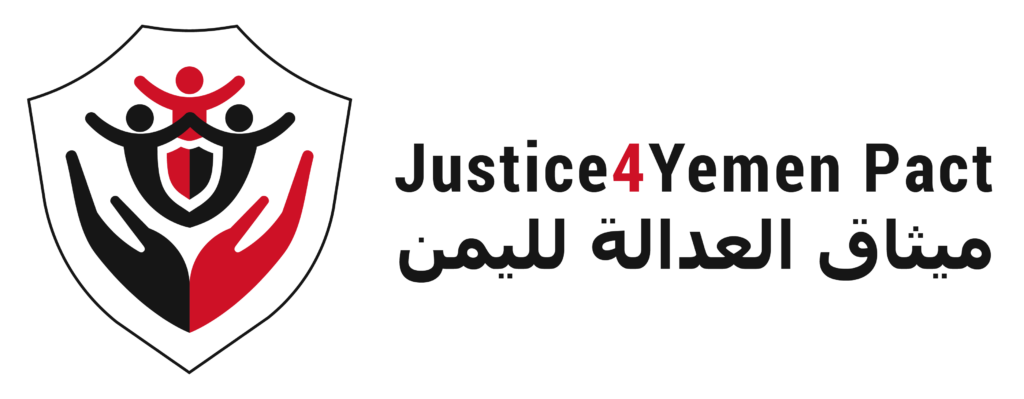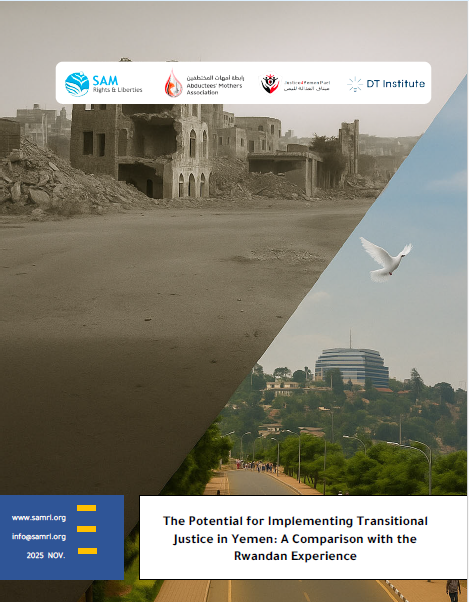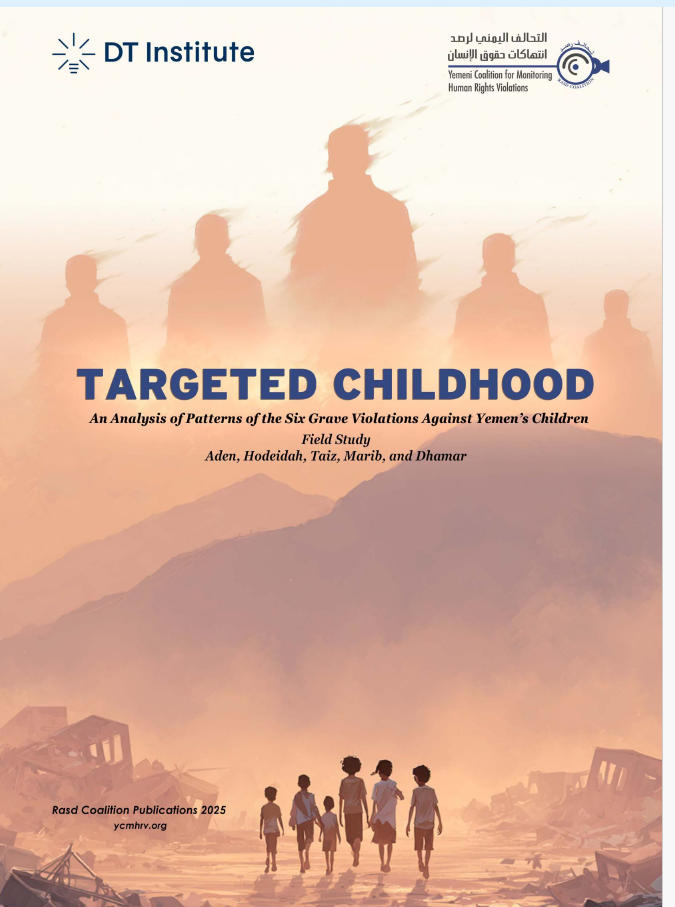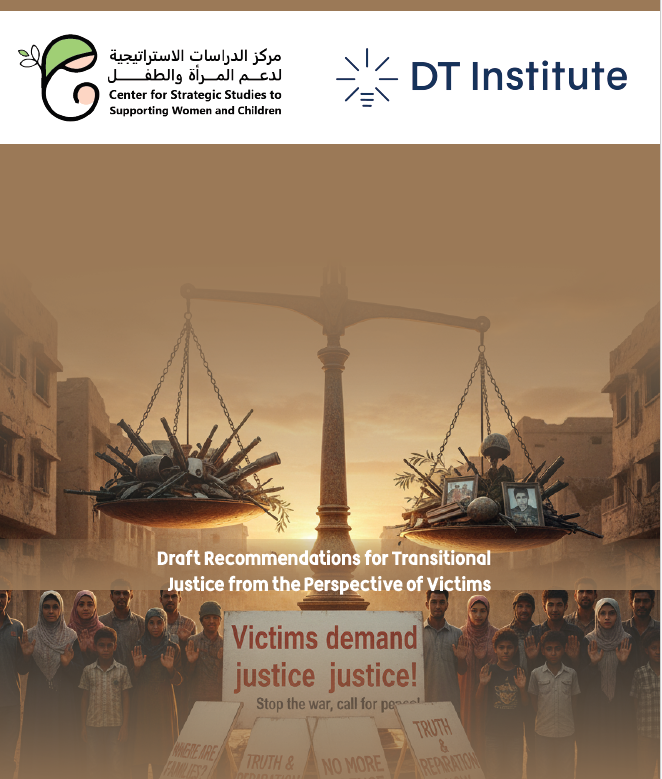| Violation: | Detention of the child Amjad Marai in the Old City of Ibb |
| Date: | September 19, 2024 |
| Location: | Amjad was arbitrarily detained in the Ahwal Ramadan neighborhood in the Old City of Ibb, Ibb Governorate, which is controlled by the Houthi group. A wide-scale detention campaign took place in September 2024, coinciding with popular calls to commemorate the September 26th Revolution, which overthrew the Imamate regime in northern Yemen. |
| Type of Violation: | Arrest and detention for several weeks in Ibb and Sana’a |
| Location: | Amjad Marai neighborhood. 13°58’17″N 44°11’00″E 13°58’19″N 44°09’45″E Ibb Governorate |
Preface:
On September 19, 2024, armed forces affiliated with the Houthi group raided the Ahwal Ramadan neighborhood in the old city of Ibb, Ibb Governorate, causing panic among thousands of residents.
The confusion on locals’ faces was exacerbated by the knowledge that all these forces, armed to the teeth, were searching for a seventeen-year-old boy. For simply raising the Yemen flag and calling to celebrate the National Day on his Facebook page.
On 26th September of each year, Yemenis celebrate one of their most important national days, the 26th September revolution. The day on which they defeated the Imamate tyranny rule.
But the past few years have been different for Yemenis. Not only has celebrating National Day become difficult in areas controlled by the Houthi militias, but it has also become an occasion where they are vulnerable to abuses and arbitrary detention. Houthi group mobilizes its forces to stage a brutal revelry, raiding homes and arresting anyone they can reach who is gathering or planning to celebrate the 26th September revolution, including children.
Houthi forces raided Amjad’s home and arrested him. Before that, the streets of Ibb were a scene of systematic repression, and dozens of children and young people were arrested. This coincided with a widespread media disinformation campaign accusing the victims of “spreading chaos.” It later became clear that this disinformation campaign was systematic, designed to intimidate families, silence voices, and justify the violations that the group had planned and begun to brutally carry out in several cities, including the capital, Sana’a, Amran, Dhamar, Ibb, Hodeidah, Al Mahwet, Taiz, Al Baidha, Addali’e, and Hajjah. And Amjad’s case was only the tip of the iceberg.
Political and Historical Context:
For Yemenis, the September 26th, and October 14th Revolutions of 1963, are the birth of Yemeni identity and are widely celebrated in the country.
In June 2004, the Houthi group launched its first war in Sa’da Governorate against the Yemeni state. The war ceased in September after the killing of the group’s leader, Hussein al-Houthi. However, it flared up five times over the next five years, as the movement’s strength grew due to the intervention of Lebanese Hezbollah and, behind it, Iran. The sixth war took place between August 2009 and February 2010. In 2011, the Houthis participated in the peaceful youth movement demanding the overthrow of the Saleh regime, which had been in power for 33 years. Saleh stepped down in 2012 and handed power to his vice president, following the Gulf Cooperation Council (GCC) states Initiative. The following year, the National Dialogue Conference was launched, with the participation of all Yemeni forces, including the Houthi group. However, the group, which had continued to accumulate power with Iranian assistance, was preparing for a coup. This was achieved on September 21, 2015, when it seized control of the capital, Sana’a. Backed by the weapons and expertise of Hezbollah and Iran, the Houthi movement not only seized control of the capital but also ignited a war across much of Yemen, using various pretexts. It also opened the hell wide open for Yemenis, which have not yet closed, as it continues to commit blatant violations against civilians in violation of all domestic and international laws.
This is the basis for the campaign of arrests launched against civilians in September 2024, which coincided with a tense political context. The Houthi de facto authorities strive to obliterate any reference to the anniversary of the revolution that ended the Imamate rule in 1962, by portraying those celebrating it as “sleeper cells.”
Systematic Arrests (Amjad a case in Point):
Dozens of children in Ibb Governorate were subjected to arrest and enforced disappearance in September 2024, which are grave violation against children under international humanitarian law and international human rights law. Houthi militants launched a campaign of arbitrary arrests and detention of hundreds of citizens, including dozens of children, amidst a state of terror among families and local communities under their control.
This campaign was launched under the pretext of preventing chaos after reports were filed against anyone carrying the Yemeni flag or listening to patriotic songs. The ready-made accusation was that they were “sleeper cells” seeking to exploit the celebration of the Yemeni Revolution anniversary on September 26 to stir up public unrest. The matter did not stop there. Rather, this incident opened the door for Houthi officials to financially blackmail families who had tried to release their detained children.
Houthis leveled various charges against the children, including collaborating with local, regional, and international parties hostile to the group and working to spread chaos. These charges later turned out to be false and were used to intimidate residents.
Before the day the Houthi group arrested Amjad Marai, from his neighborhood in the old city of Ibb Governorate, the group had arrested other activists in a campaign it launched, accompanied by a widespread media campaign to justify these violations. The wave of detention included activists, students, and passersby in the streets and alleys of the city, and even in the countryside, as was the case in other governorates under its control.
Houthi authorities detained Amjad for several days in Ibb Governorate, amid widespread media and popular solidarity with Amjad and his family. However, this did not prevent the Houthi group from transferring him to the Central Prison in Sana’a, where he remained for nearly three months.
He was subjected to repeated interrogations and intimidation. On December 9, 2024, he was released following appeals from his mother, who works as a nanny at the Al-Saeed Complex in Ibb.
The Houthi Media Disinformation
The Houthis invest in a variety of news outlets and arts productions, some of which promote misinformation about their opponents, to control the areas of their influence and justify the violence they commit against opponents. Documentaries, articles, social media posts, and cartoons, published on pro-Houthi platforms, focus on directing media narratives in areas under their control to maintain a competitive advantage in public discourse and media narratives—the “soft war,” as they often refer to.
The Houthis benefit from Iran’s and Hezbollah’s expertise in disinformation, manipulating information, and using it to suppress opponents. Hezbollah’s support is not limited to hosting Houthi-affiliated media outlets and networks; it also extends to training media personnel, on what is known as “war media,” an Iranian term for military media that has emerged in Iranian-led conflict zones in Iraq, Syria, Lebanon, and Yemen.
The Houthi group not only arrested Amjad but also employed its supporters on social media to spread misinformation and level accusations widely, seemingly to neutralize society and justify the violations and arrests. This increased Amjad’s mother’s fears that harm would befall him, given the wave of trumped-up charges against the detainees.
Abdul Qader Al-Murtada, the Houthi official in charge of prisoners’ affairs, posted a tweet on X justifying the arrest of children and youth who celebrated the September 26 Revolution. He accused them of being agents and said they were causing trouble, issuing serious threats: “We will deal with any anarchists or slanderers, and with anyone who tries to cause trouble, just as we would deal with the enemy.”
Journalist Anis Mansour also posted a circular, which he said was circulating, promoting accusations against the detained children, claiming that they were financially and intelligence-backed by some foreign and Arab countries and by mercenary traitors, to incite discord, chaos, and unrest in the capital and other areas.
Human rights sources confirmed to the Rasd Coalition that many detainees aged between 13 and 19, and that the Houthis were unable to obtain confessions from them regarding the charges justifying their detention. This prompted them to request guarantees from their families, as they claimed was the case with the child Amjad, to prevent him from making any calls for chaos, according to their allegations. This confirms that the group did not find evidence to support the charges it promoted.
The sources stated that some were released with guarantees, while others were released through mediation led by tribal sheiks and social figures. We found that some of the children’s parents paid sums of money in exchange for their children’s release.
Conclusion:
Detention of the child Amjad Marai (17) in September 2024 is not just an isolated incident, but rather a link in a chain of systematic repression practiced by the Houthi group against civilians in Yemen, aimed at silencing any potential opposition. The crackdown and arrests launched during Yemenis’ celebrations of the anniversary of the September 26th Revolution, a symbol of the end of the Imamate regime, and which included dozens of children accused of “spreading chaos,” clearly reflect the group’s brutality, not only toward those who disagree with it but also those who do not believe in it. They also reveal that they do not need any evidence to suppress people, considering the militia’s ability for misinformation and deception, to justify their violations.
The Houthi group’s deception is evident in fabricating charges of collaboration with “foreign countries,” defaming victims with false moral accusations, and exploiting social media platforms as a tool to intimidate families (as in the tweets of Abdul Qader al-Murtada and Anis Mansour). The group, supported by Iran and Hezbollah, also maintains a media machine that blocks websites (“62% of websites are blocked in Yemen” according to top10vpn), producing misleading content (documentaries, cartoons, false reports), and exploiting religious identity (promoting the concept of “guardianship” to legitimize violence against opponents).

Despite international pressure, the group continues its violations, benefiting from financial extortion (releasing detainees in exchange for ransoms) and a lack of accountability (weak enforcement of international agreements such as the Convention on the Rights of the Child).
Amjad’s story is a stark reminder of the need to: strengthen international oversight of Houthi violations; support independent media platforms to break the monopoly on the narrative; and launch popular pressure campaigns to quickly end these violations. As a researcher, put it: “The only solution is to break the barrier of misinformation… Yemenis deserve to have their story told without distortion.”





